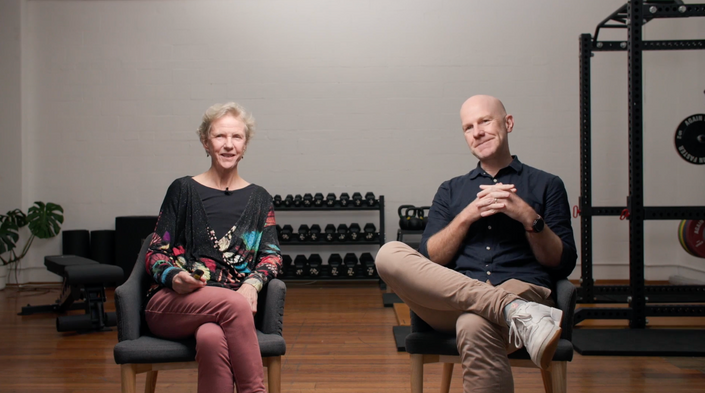Introduction
The Lower Limb Tendon Masterclass, taught by Jill Cook and Mick Hughes, provides a completeoverview of the assessment and management of Lower Limb Tendon pain. This ExecutiveSummary provides clinically relevant, actionable information that may be useful to healthprofessionals.
Part 1: Tendon Pathology and Pain
Tendons are made up of connective tissue and bundles of collagen tied up in fascicles. On the continuum of tendon pathology, once the tendon has become degenerative, it has no capacity to be reversed due to the loss in the matrix. Risk factors for tendon pain include genetics, metabolic issues, smoking and/or menopause.
- If imaging is negative for tendon pathology, it is highly predictive of the pain not being from the tendon.
- Tendon pain can cause kinesiophobia and muscular inhibition. Clinicians should spend time providing quality education and reassurance that loading the tendon is safe.
- Manual therapy can be used as an adjunct to a robust progressive loading program to provide interim pain reduction.
Part 2 - Tendon Loading
The three main loads that tendons encounter are tensile, compressive and/or friction/shear loads. These loads can occur concurrently. It takes 18-24 months of decent plyometric exposure to have enough resilience built into tendons. A period of 2-3 weeks of unloading is enough time to negatively affect the tendon cells and matrix, therefore regular loading is essential for tendon health. The highest tensile load for the Achilles tendon is during sprinting, therefore adequate rehab must be completed before returning someone back to their high-demand activities. Isometrics are helpful in creating a stiff tendon which in turn has a greater ability to store and release energy, however, adequate muscular strength, endurance and power should be present prior.
- Clinicians should understand how to load a patient's tendons and muscles sufficiently in order to incur a desired outcome relating back to the patient’s goals.
- Educate your patient on how to monitor overload over a 24-hour period.
- Program plyometrics early in the workout when the person is not fatigued.
- For compressive tendinopathy, avoid passive stretching as it increases compressive loads through the tendon.
- A period of off-loading is sensible to calm the acute tendon pain down, but a graded exposure is required to return the person back to their activity/sport.
Masterclass Preview
Enjoy this sneak peak of Jill Cook going through a progressive loading assessment.
Part 3 - Assessment of Lower Limb Tendinopathy
The assessment includes a detailed subjective history (location of pain, 24-hour pattern, aggravating factors, changes in load, previous treatment, medications, orthotics, footwear and general health) and a thorough objective exam (muscle bulk, calf raise endurance, hop test and ankle flexibility). The peritendon as a source of pain should also be considered in the differential diagnosis.
- Assess pain response to load using double leg to single leg load and increase the speed until the tendon is storing/releasing energy.
- Palpation is a poor clinical outcome measure and should be avoided by both clinicians and athletes.
- Tendon pain is localised and not diffuse in nature.
- Use the SCREEND’EM toolkit to screen for spondyloarthropathy in patients with tendinopathy.
Part 4 - Management of Lower Limb Tendinopathy
Managing tendons can take 3-6 months to build a solid base strength as well as a good storing/release ability. The stages of management start with isometrics, heavy slow resistance (HSR) training, energy storage/release and a gradual return to sport.
- HSR training and isometrics improve tendon stiffness.
- Start isometrics with a heavy 5 sets of 45-second holds and 2 minutes rest in between sets to allow adequate recovery time.
- When progressing a rehab program, add/change one variable at a time so clinicians can better monitor the response to load.
- Using a metronome during HSR training can add an auditory component that helps to drive the cortex response.
- Monitor frequency, intensity and volume when returning someone back to sport.



